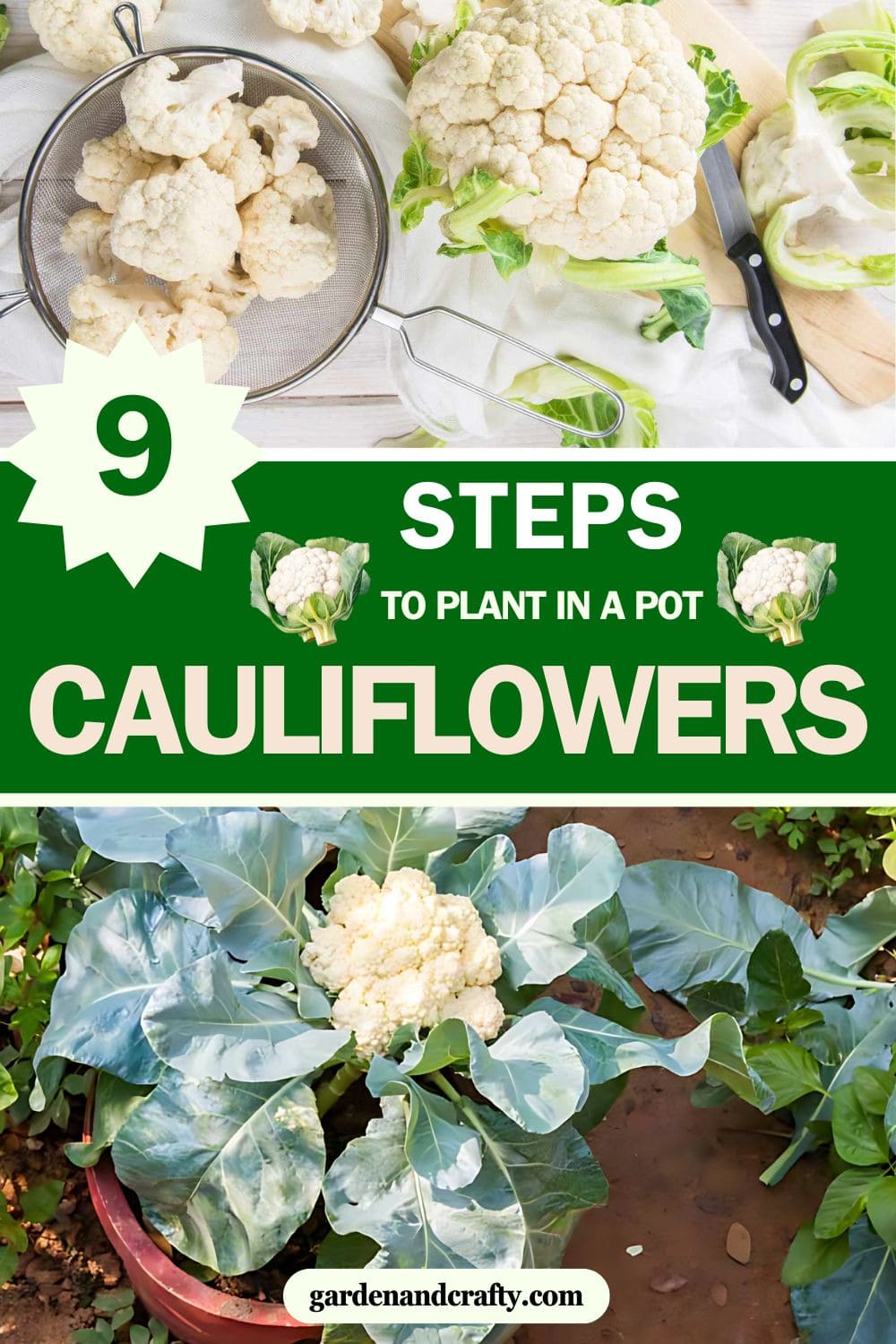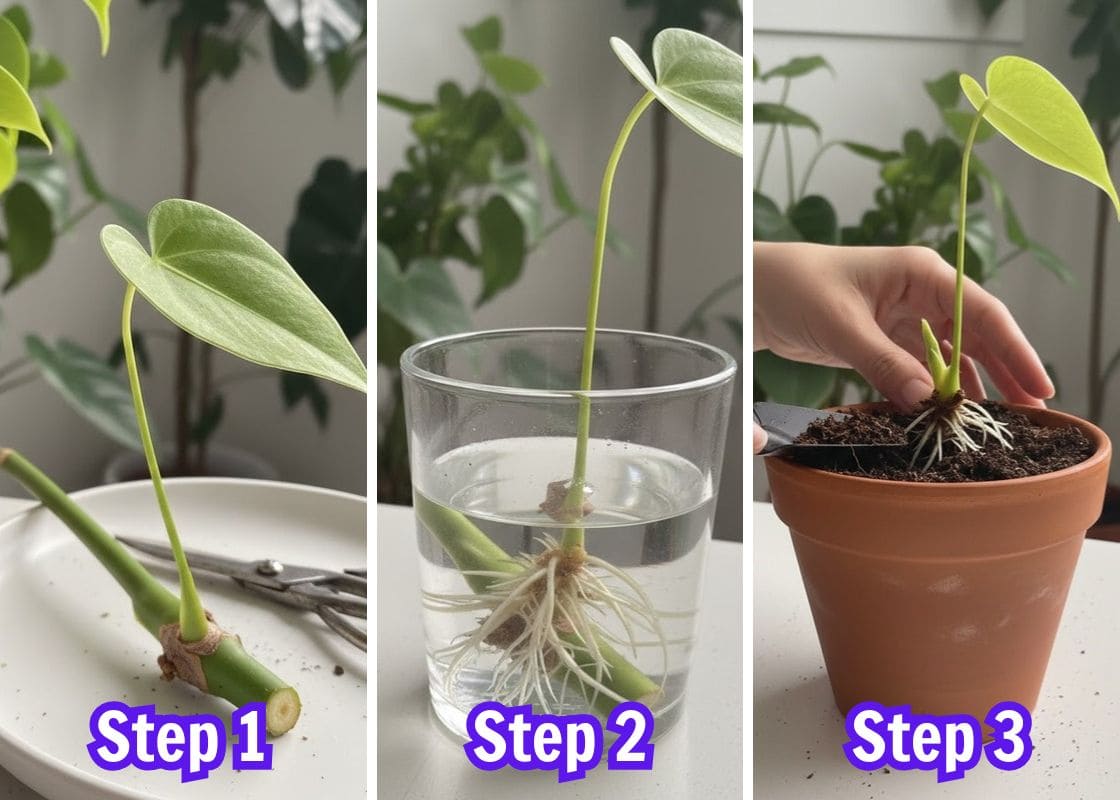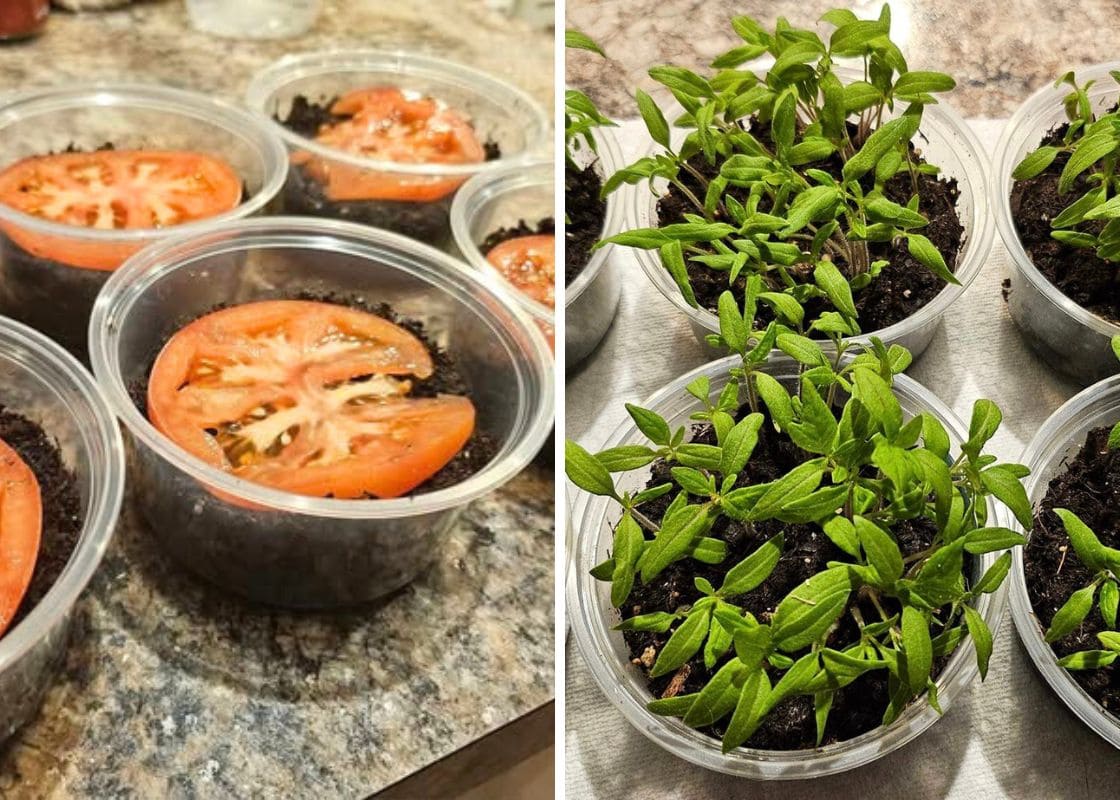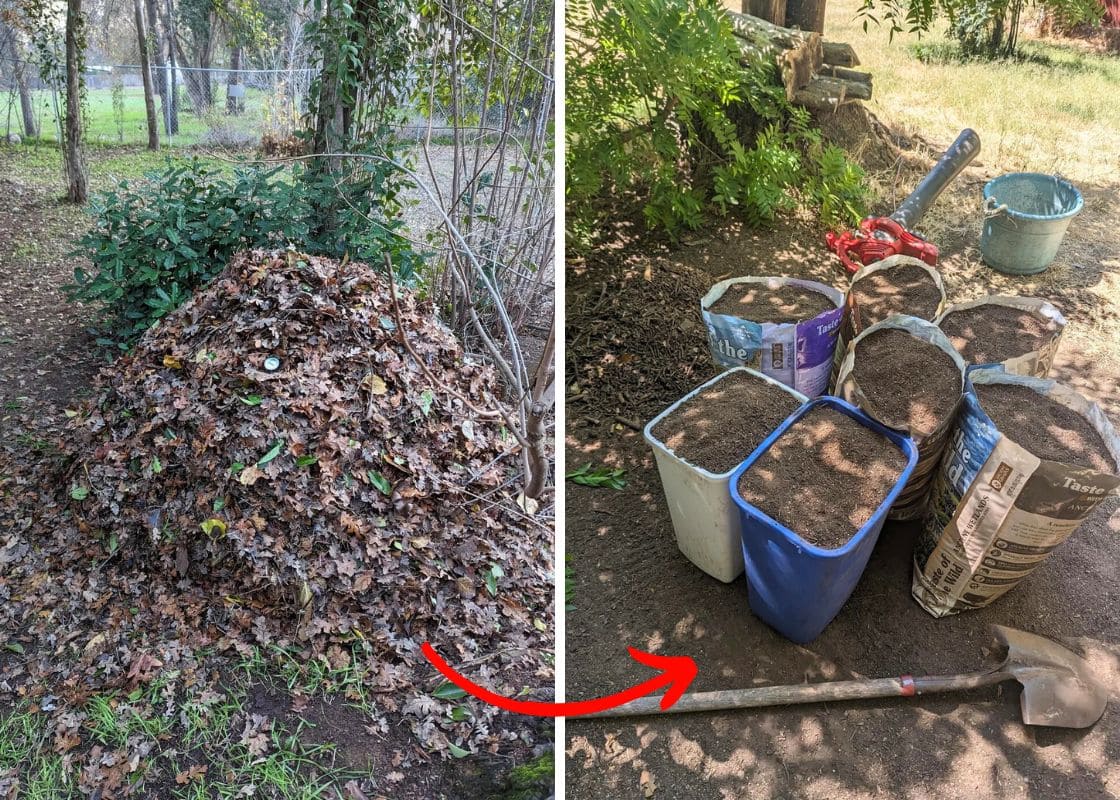Cauliflower, renowned for its delicate flavor and versatility, is traditionally grown in larger garden beds.
However, cultivating this vegetable in a pot brings the charm of home gardening to those with limited space or urban settings.
Growing cauliflower in a pot not only allows you to enjoy fresh, home-harvested produce but also offers a rewarding experience right from your balcony or patio.
Step 1: Choose the Right Pot
You see, cauliflower has shallow roots, so you don’t need a super deep pot. Instead, aim for a pot that’s at least 8 inches deep and 18 inches wide.
If you’re planning to grow more than one plant, you’ll need a bigger pot or multiple pots, keeping about 18-24 inches between each plant.
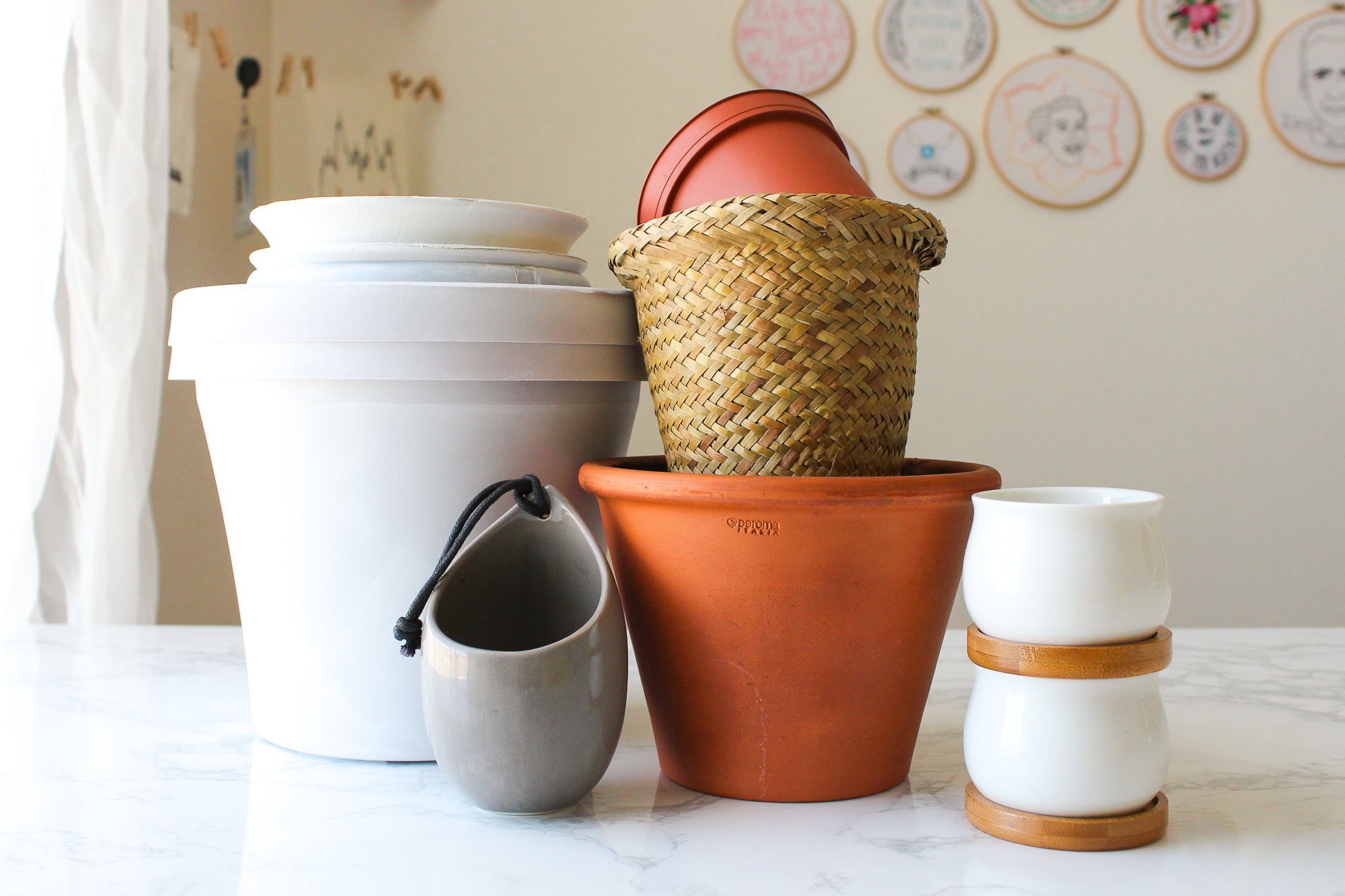
Plastic and metal containers are my go-to because they hold water well and are light enough to move around. This is handy since cauliflower doesn’t like too much heat.
Cement or stone pots are also good at retaining water, but they can be heavy.
Whatever pot you choose, make sure it has at least one 1/2-inch drainage hole per square foot of surface area.
Step 2: Prepare the Right Soil Mix
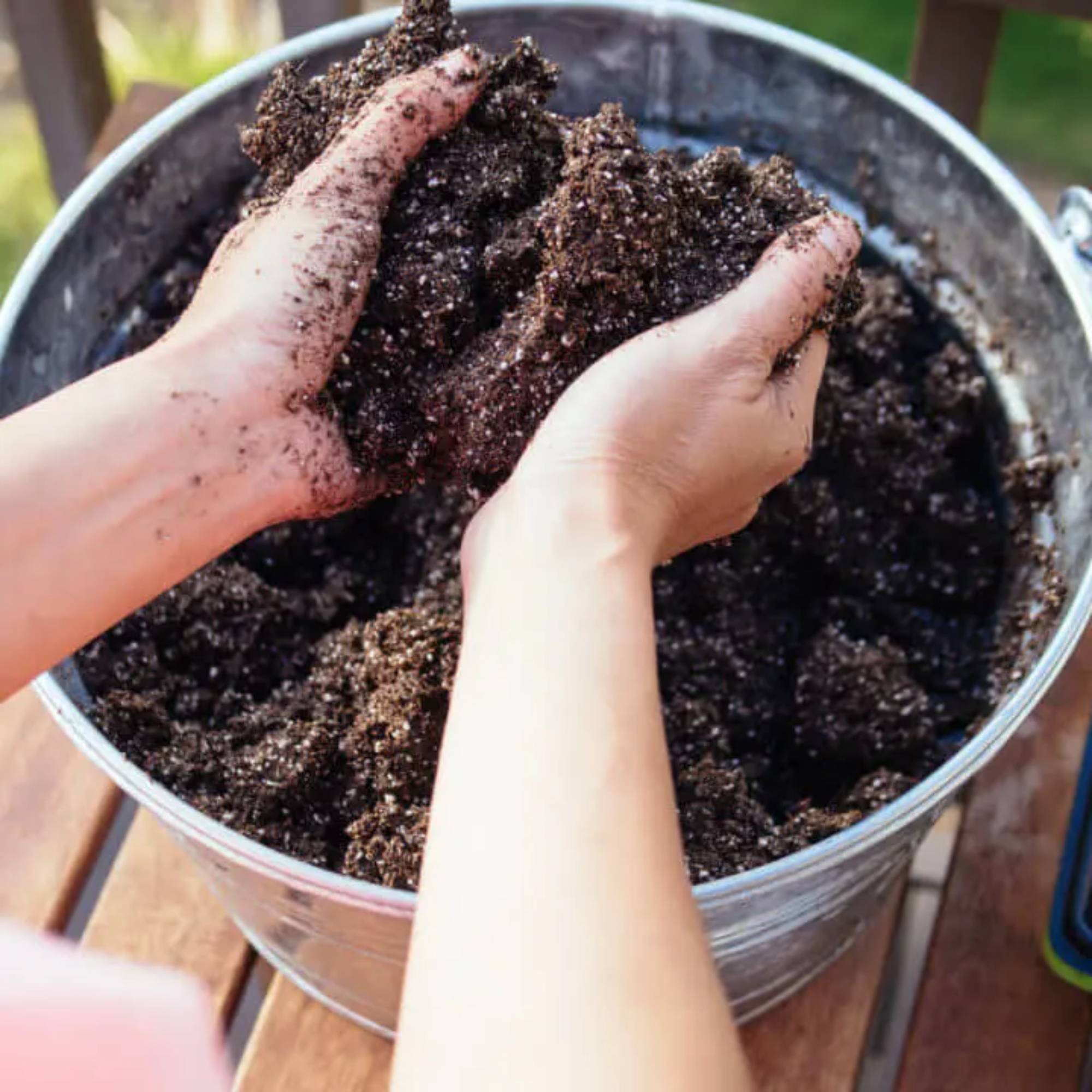
You need soil that’s rich in organic matter. Compost is your best friend here. It adds nutrients and helps retain moisture, which is crucial for cauliflower.
Besides, a mix of potting soil, compost, and a bit of sand or perlite will do the trick. Cauliflower prefers slightly acidic to neutral soil, with a pH between 6.5 and 7.0.
If your soil is too acidic, add a bit of lime to balance it out. If it’s too alkaline, some sulfur should do the trick.
Step 3: Choose the Right Cauliflower Variety
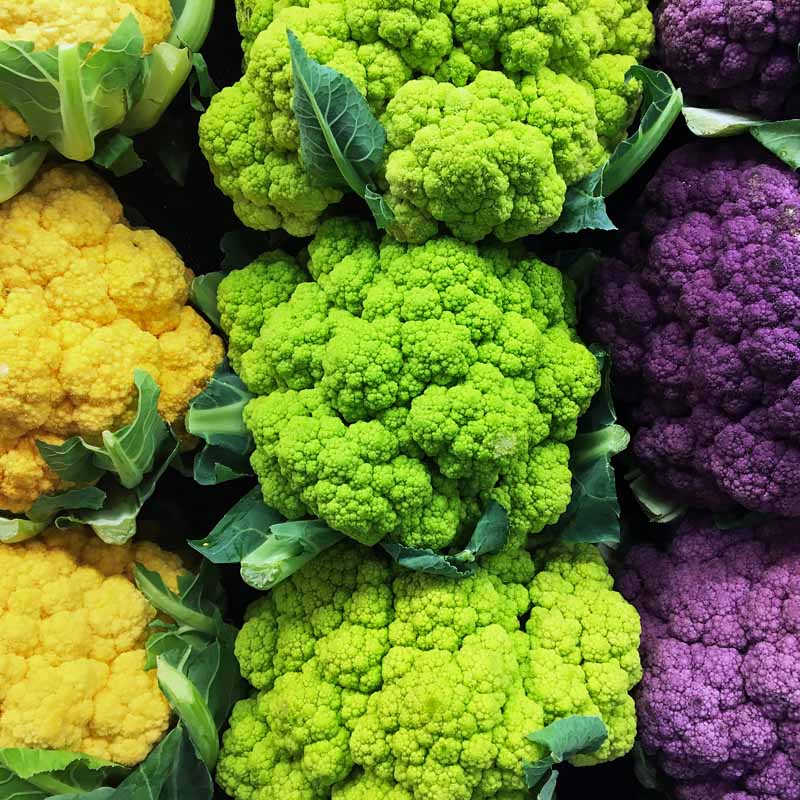
If you’re new to this, you might want to go for the mini-cauliflowers. These little guys are perfect for pots because they don’t need much space.
And hey, why not add a splash of color to your garden? Cauliflowers aren’t just white; you can find them in purple, orange-yellow, and even lime-green.
These colorful varieties not only look great in your garden but also on your plate.
Step 4: Planting Cauliflower In a Pot

If you’re starting from seeds, plant them about half an inch deep in the soil. Make sure to keep the soil moist but not waterlogged.
If you’re using seedlings, dig a hole in the center of your pot that’s deep enough to cover the roots.
Then, gently place the seedling in the hole and cover it with soil, pressing down lightly to secure it.
Step 5: Provide Sufficient Sunlight and Water
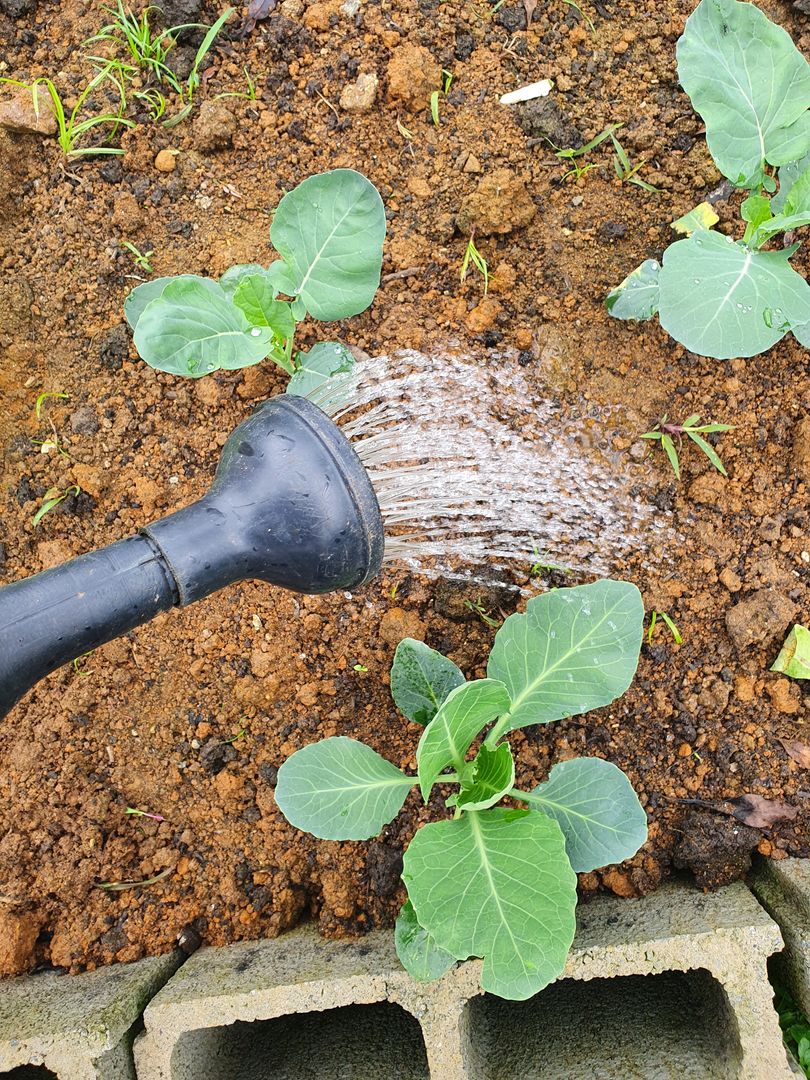
First off, cauliflower needs 6 to 8 hours of sunlight.
But be careful, when the temperature starts climbing above 75°F, you have to move your pots to a shaded spot during the hottest part of the day.
In addition, cauliflower loves consistent moisture. Stick your finger a couple of inches into the soil to check. If it feels dry, it’s time to water. If it’s still moist, hold off.
Step 6: Fertilizer
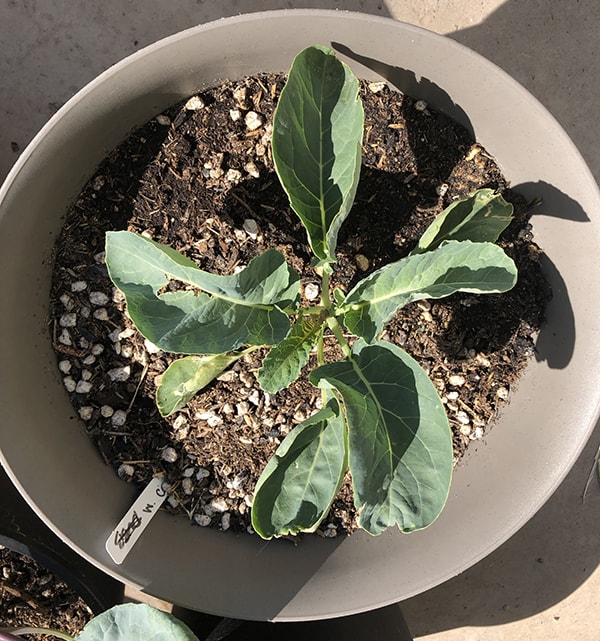
You need to make sure your soil has enough nitrogen and potassium. If your soil is lacking, you can use a fertilizer that’s high in these nutrients.
I usually go for a balanced fertilizer and apply it every two to three weeks.
Now, here’s my little secret: seaweed extract. It’s packed with boron, which is super important for cauliflower.
If your plants are showing signs of boron deficiency, like brown heads or dying leaf tips, give them a dose of seaweed extract.
Step 7: Blanching
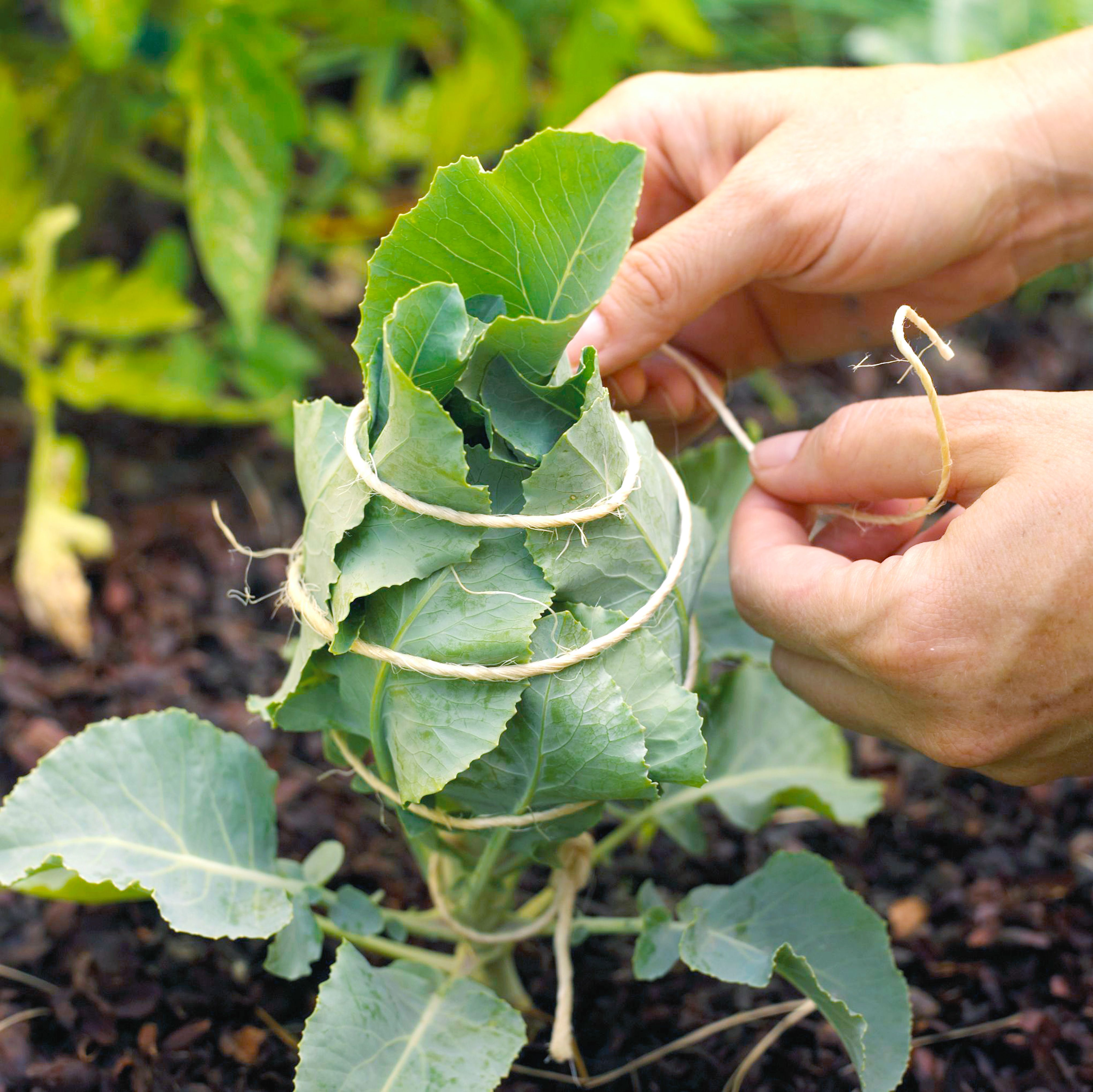
When the cauliflower head starts to form and is about the size of an egg, it’s time to get your blanching game on to shield the head from sunlight to prevent it from turning yellow or brown.
You have to take the plant’s own leaves and gently fold them over the head.
You can secure them with a bit of twine or a rubber band, but don’t go overboard – leave some space for air to circulate.
Step 8: Managing Pests and Diseases
Aphids are tiny but mighty pests that can cause a lot of damage.
You’ll notice curled, yellow leaves and maybe some sticky stuff called honeydew. A good spray of water can knock them off, or you can use insecticidal soap.
Now, let’s chat about cabbage worms. These little guys will leave big, ragged holes in your leaves.
Handpicking them off is effective, but if you’re squeamish, try using Bacillus thuringiensis.
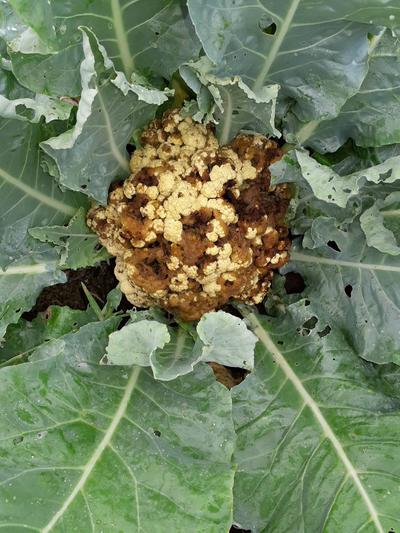
Downy mildew is another common issue. You’ll see yellow spots on the leaves that eventually turn brown.
To prevent this, make sure your plants have good air circulation and avoid overhead watering.
And then there’s black rot, a nasty fungus that causes yellow, V-shaped areas on the leaf edges.
The best way to deal with this is to destroy infected plants and ensure good drainage.
Step 9: Harvest
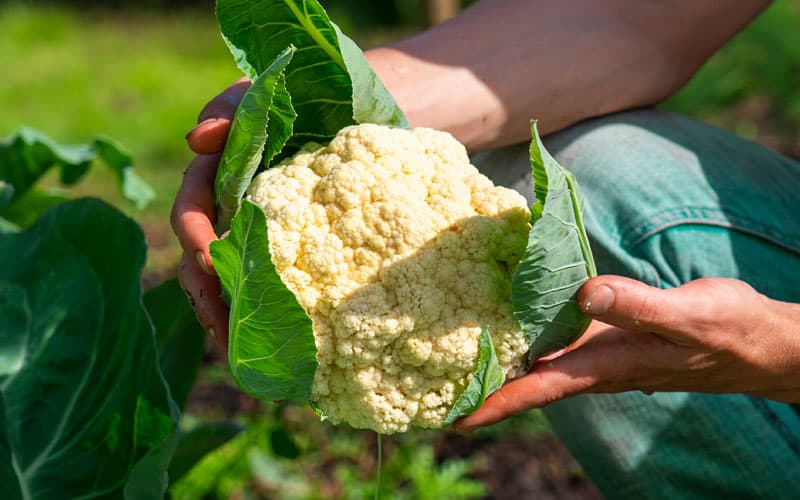
You can pick your cauliflower when the heads are firm, compact, and about 6 to 8 inches in diameter. If you wait too long, the heads can become over-mature and develop a bitter taste.
To harvest, grab a sharp knife and cut the main stem just below the head.
Once you’ve harvested your cauliflower, it’s best to use it as soon as possible for the freshest taste. If you need to store it, keep it in the fridge where it can last for up to a week.
